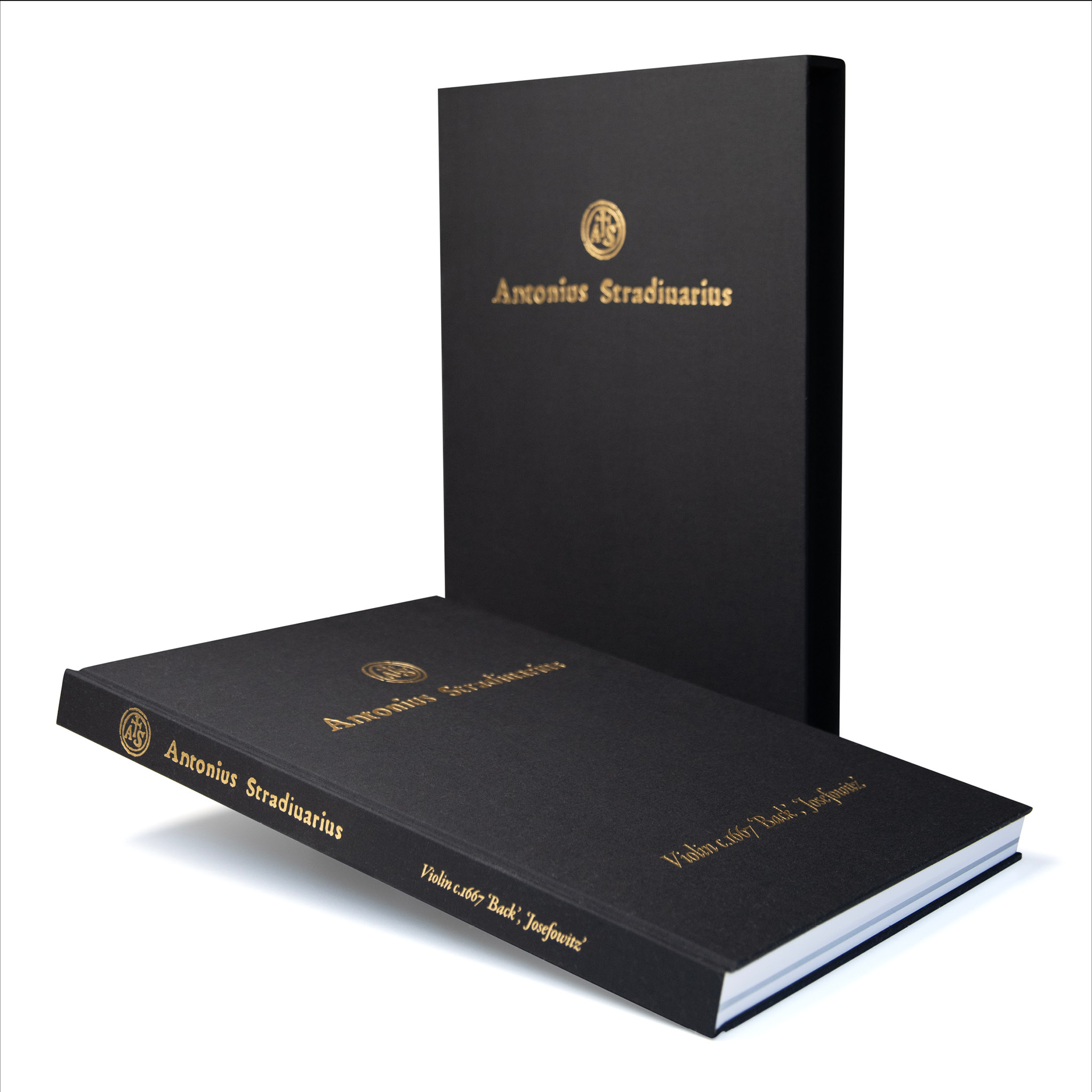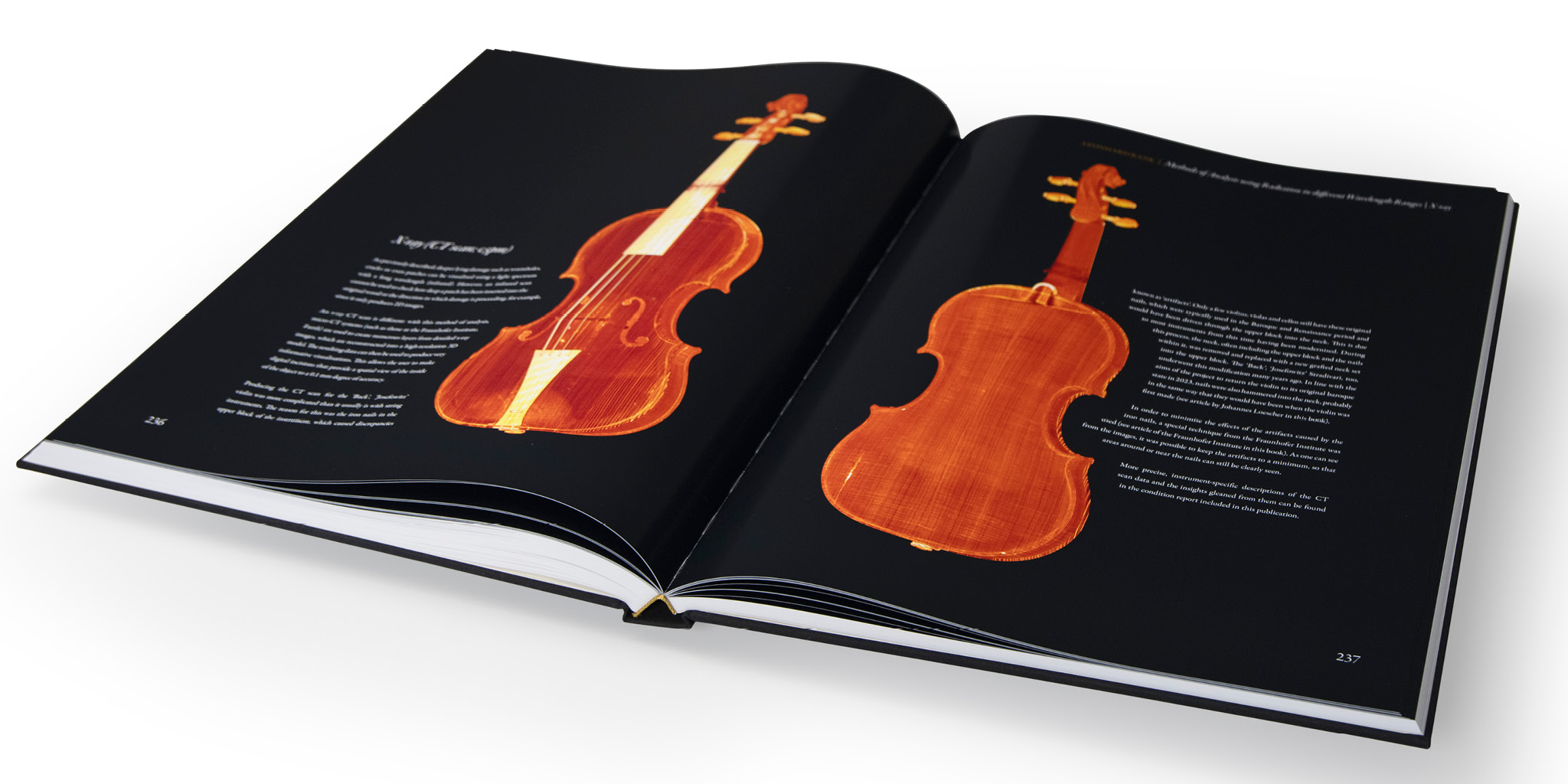
In 1667, within the historic walls of Cremona, the birthplace of violin making, a legend was born. There, under the masterful hands of Antonio Stradivari, arguably the most famous violin maker of all time, the violin now known as the ‘Back’, ‘Josefowitz’ came into being: an instrument of exceptional beauty and rich in sound, which was to become part of countless musical moments over the centuries. Made in the Baroque era, the ‘Back’, ‘Josefowitz’ reflects the violin-making practices and musical requirements of the time. The violin has had a tumultuous history, undergoing various structural modifications and restorations over the course of its life. Like many other instruments of that period, it was adapted in the 18th century to meet the demands of new repertoire and larger concert halls. Today, over 350 years later, this violin will once again captivate international audiences with its unique, original sound.


As part of an ambitious endeavour unlike any other worldwide, a team of over 20 violin-making and scientific experts is embarking on a fascinating journey into the past. The goal: to restore the ‘Back’, ‘Josefowitz’ to its original Baroque state. Aside from the ‘Gould’ Stradivari, displayed at the Metropolitan Museum in New York, the ‘Back’, ‘Josefowitz’ is the only violin by Stradivari to have been returned to its original Baroque state. The aim of the restoration project was an ambitious one: to reverse the alterations of the past with the utmost care, without disturbing the unique, original essence of the instrument. With meticulous precision and scientific expertise, the experts – among them violin maker and Baroque expert Johannes Loescher – embark on the task of restoring the original sound of this instrument. It is a detailed process that has been documented at every stage, offering future generations of violin makers, soloists and enthusiasts an insight into Stradivari's secrets. Audio recordings, both in the studio and in a small church, accurately capture the sound of the violin before and after the restoration. Mayumi Hirasaki, Professor of Baroque Violin at the renowned Mozarteum in Salzburg, has actively accompanied the entire process and is enthusiastic about the results. She makes a detailed analysis of the change in sound, and observes that the violin resonates much more freely after the restoration, likely coming close to how it would have resonated when it was made in 1667. It is an impressive comparison that demonstrates the audible rebirth of the ‘Back’, ‘Josefowitz’. The recordings highlight the expressive power of the instrument and the richness of its sound, which have truly come into their own as a result of the restoration. The ‘Back’, ‘Josefowitz’ now sounds like it did when it first left Stradivari's hands: full of vitality, power, and emotional depth. This is confirmed by the tension and vibration analyses conducted by experts Andreas Jacobi and Luca Jost.


The results of this extensive research are recorded in a monograph of over 350 pages published by Jost Thöne Verlag – a continuation of their series of multi-volume publications on Stradivari. This documentation serves not only as a scientific reference but also allows music lovers and enthusiasts to follow the fascinating journey of the ‘Back’, ‘Josefowitz’. Leonhard Rank’s detailed condition report, complex varnish analyses and search for traces of the past immerse the reader in a unique world of detail. Using special photography it was possible to reveal details that had never been seen before. The conversion of the ‘Back’, ‘Josefowitz’ is more than just a restoration; it is a journey into the sound world of the Baroque period, a rediscovery of Stradivari's original intentions. It is a project that pushes the boundaries of possibility and enriches the music world with an unparalleled listening experience.
Starting from summer 2024, the instrument will be exhibited at the Museo del Violino in Cremona, just a stone's throw away from its birthplace, forming the centrepiece of an exhibition for the international Monteverdi Festival: a unique and fitting occasion to experience this reborn legend of music history first hand. Visitors can admire the violin up close, listen to its sound in the concert hall, and learn much more about its fascinating history and the restoration process.
Contributions
Bambarone Art Foundation, Peter Biddulph, Carlo Chiesa, Theobald Fuchs, Mayumi Hirasaki, Philip Ihle, Andreas Jacobi, Luca Jost, Johannes Kammann, Marén Korhammer, Florian Leonhard, Johannes Loescher, Davide Longhi, Lüder Machold, Igor Moroder, Prof. Petra Müllejans, Pinsker Druck und Medien GmbH, Leonhard Rank, Gabriele Scholz, Jochen Stahl, Ernst Stöttinger, Claudius Thöne, Jonas Thöne, Jost Thöne, Francesco Toto, Arjan Versteeg, Rebecca Wagner
This monograph was made in collaboration with the Bambarone Art Foundation.
The art foundation “fondazione artistica bambarone” is a non-profit institution promoting the dialogue between art, nature and architecture, between local and international artists.
In collaboration with local and international curators, the foundation promotes contemporary art projects of emerging talents in the fields of visual arts, literature, performing arts, music, art criticism and cultural management by awarding scholarships, board, lodging and the provision of tools and work utensils.

https://www.artfoundation-bambarone.com
The monograph is now available - orders at https://violinbooks.com, shipping starts in August 2024.
Format: 320 x 450mm, 352 pages
Language: English
Website: accompanying content with 3D model and sound comparison
Limited edition: 100 copies Library Edition | 20 copies de Luxe Edition (on request)
Layout & Design: kopfquartier GmbH, Marén Korhammer; book photographs: Sophie Steinebach
Contact:
Jost Thöne Verlag
Titiseestrasse 19
79853 Lenzkirch/Saig
Germany
+49 171 64 63 597
shop@jost-thoene-verlag.de
https://violinbooks.com















Additional Content

Making-of Film

Full 3D Visualisation (VIS = Visible light)*
Listen to the instrument
Recordings with Prof. Mayumi Hirasaki, before and after the reconversion.
Before:
Bach I Adagio
Telemann I Moderato
Telemann II Vivace
Telemann III Presto
After:
Bach I Adagio
Telemann I Moderato
Telemann II Vivace
Telemann III Presto
Music:
Georg Philipp Telemann: 12. Fantasy for violin w/o bass, TWV 40:25: I. Moderato, II. Vivace, III. Presto
and
Johann Sebastian Bach: 1. Sonate for violin solo, BWV 1001: I. Adagio
* System requirements for 3D-Visualisations:
Firefox v51 or above
Google Chrome v56 or above
Chrome for Android v64 or above
Internet Explorer v11 or above
Safari on MacOS
Safari on iOS v8 or above
Google Chrome recommended
Full 3D Visualisation, editing and photos outside: Andreas Jacobi; Photos Body inside: Leonhard Rank

